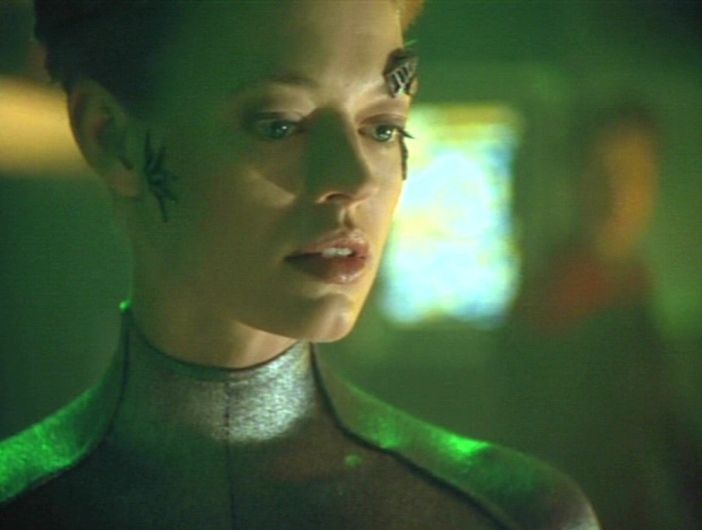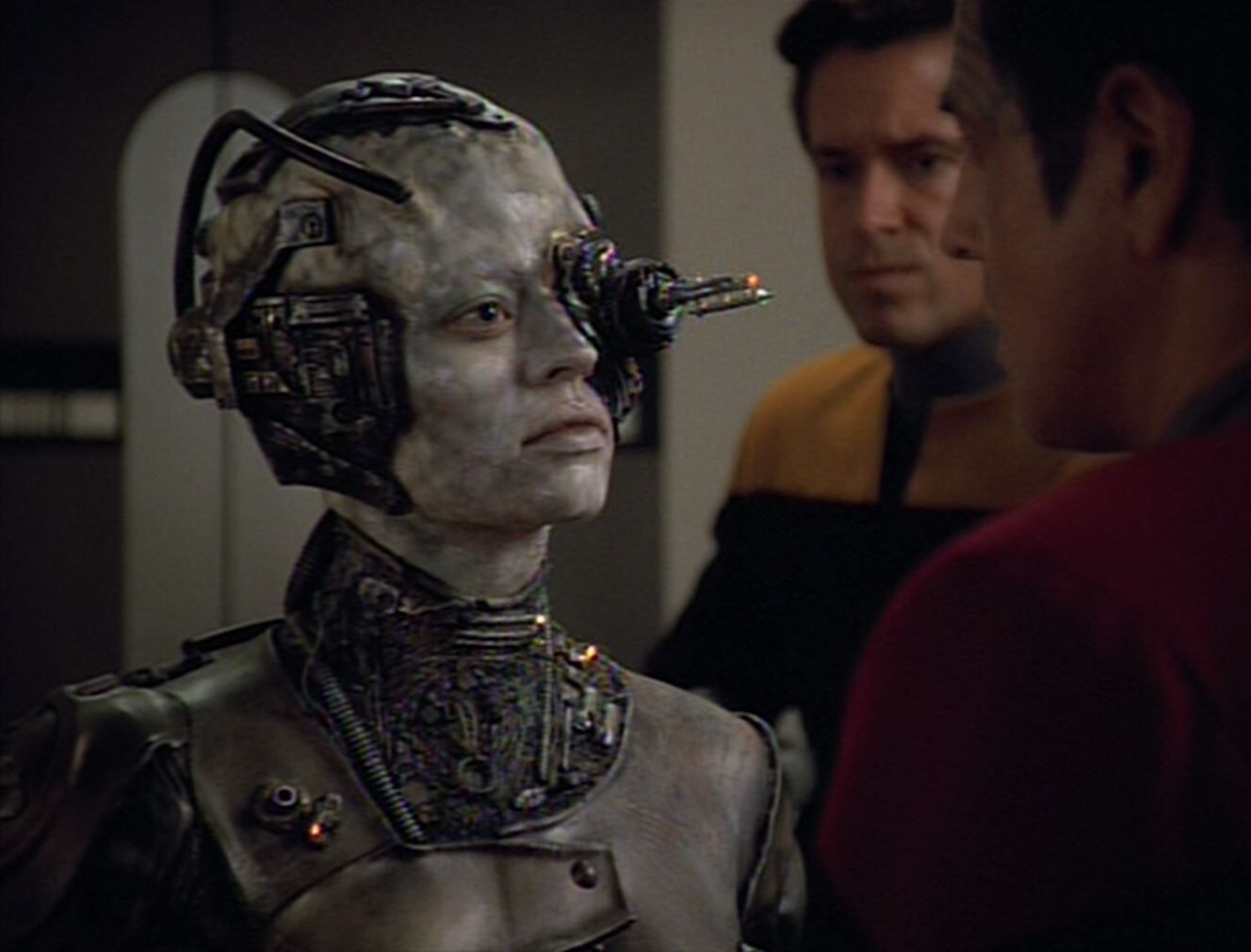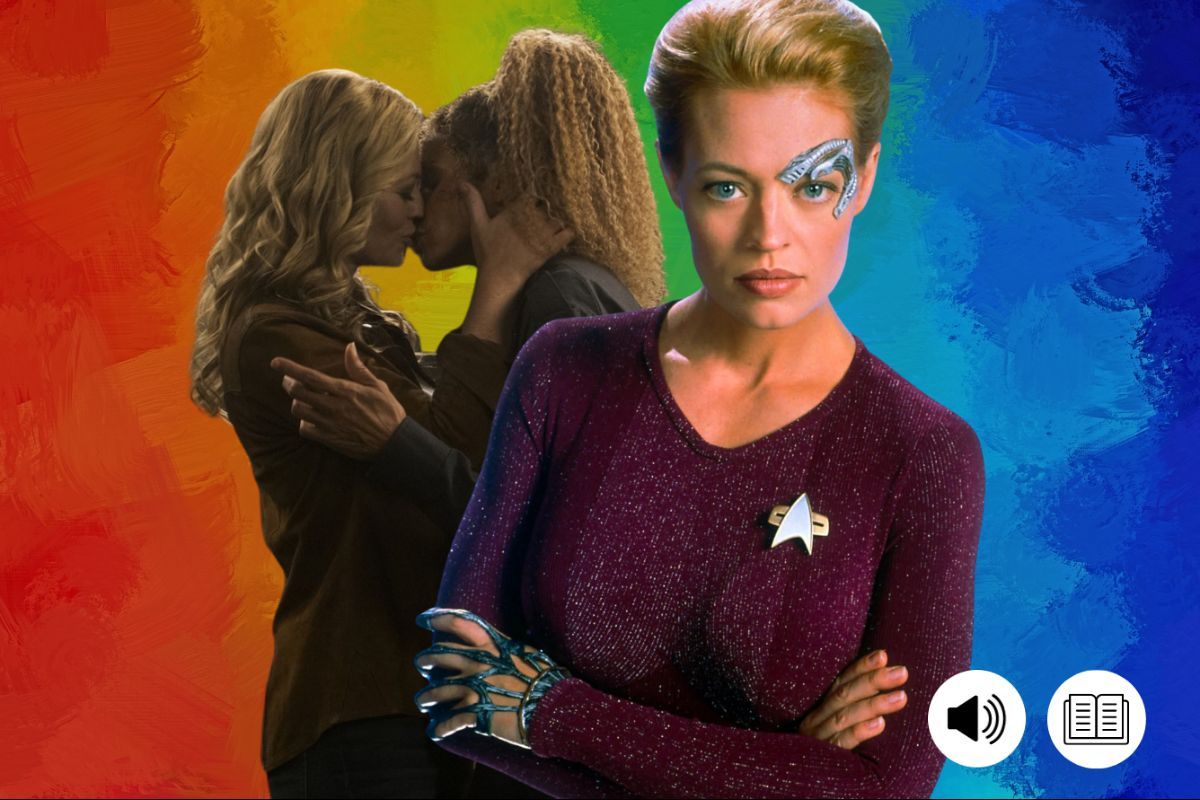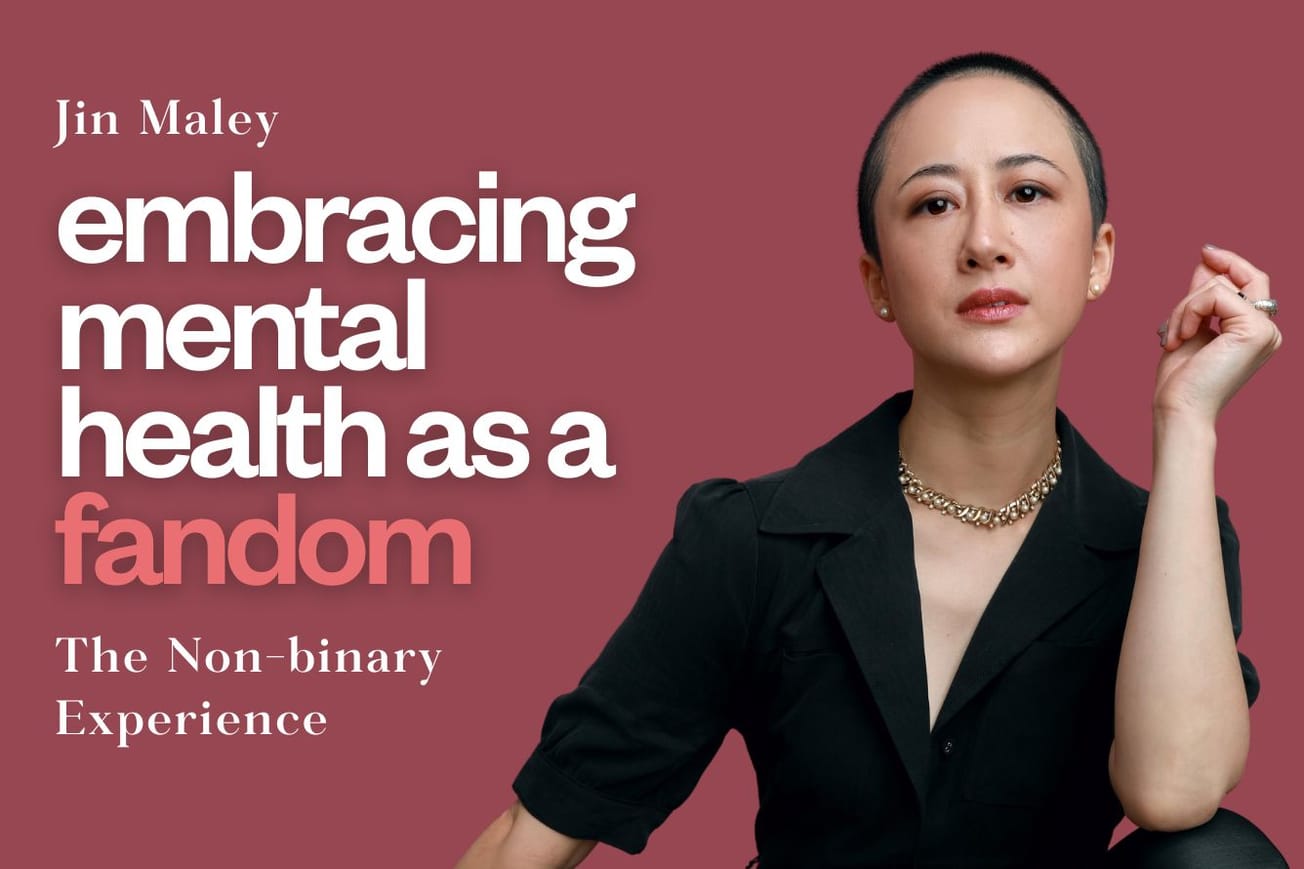Star Trek as a franchise has always had characters and relationships that the eager-eyed public has read as LGBTQ+. The most notable - the ur-reading of all fandom queer readings - would be James Kirk and Spock, or “Spirk”, as the internet lovingly calls them. They took the world by storm and are without a doubt, two of the most iconic TV characters of all time.
But there are other, just as sexually ambiguous characters that flew slightly more under the radar, such as Star Trek: Voyager’s own Seven of Nine (Jeri Ryan) – the ex-Borg who lived to be the foil for Captain Janeway (Katherine Mulgrew) herself, and whose character arc long left LGBTQ+ folks wondering if she was one of them.
At the close of 2020 – in the Star Trek: Picard episode ‘Et in Arcadia Ego, Part 2’ (S1, Ep10) – fans were vindicated.
A few things come to mind when speaking of Seven of Nine back in her Star Trek: Voyager years. Firstly, there is the obvious – her tight-fitting silver catsuit, which in the thin context of the show is there to help her skin regenerate. In reality, it was designed to entice viewers back to Voyager when it was suffering from anemic ratings. Looking back, that is undoubtedly something that leaves an unpleasant taste in the mouths of 21st-century audiences, especially given that she was such a compelling character. Nonetheless, ratings shot up 67 percent.

Her character arc is the second thing that comes to mind – Seven has arguably the most interesting character arc out of the entire Voyager crew. Her introduction at the beginning of Season 4 in the Star Trek: Voyager episode ‘Scorpion, Part II’ (S4, Ep1) is nothing short of iconic. There’s a reason why she is one of the most beloved Star Trek characters of all time – her journey from emotionless Borg drone through the tumultuous valley of trauma and self in search of her humanity is captivating.
But also… a little bit gay? Let me explain.
A Queer History of Star Trek
While Star Trek: The Original Series began in the mid-60s, the first official gay romance didn’t hit the Star Trek universe until as late as 2017, on Star Trek: Discovery, with married male crewmates – Hugh Culber (Wilson Cruz) and Paul Stamets (Anthony Rapp).
The show did eventually go for the notorious “bury your gays” trope in the Star Trek: Discovery episode ‘Despite Yourself’ (S1, Ep10), but you could also say they went for that in Star Trek II: The Wrath of Khan (1982) with Spock’s death (yes you could, shut up), or when, in the final episode of Star Trek: Voyager, ‘Endgame’ (S7, Ep25), Seven dies in older Admiral Janeway’s reality, so she comes back from the future to save her life. Totally platonically.
Lots of that going about isn’t there?
In the 50 years between the show starting in 1966 and the fans getting representation, there were multiple cries from fans to make an LGBTQ+ character canon.
Gene Roddenberry, the creator of the universe, said in a 1991 interview with The Humanist that:
“My attitude toward homosexuality has changed. I came to the conclusion that I was wrong. […] I gave the impression of being thoughtless in these areas. I have, over many years, changed my attitude about gay men and women.”
There were hopes, following that statement, that Star Trek would finally see some gay characters, but Roddenberry died before it could come to fruition.

Enter Seven of Nine, the ex-Borg that stole the hearts of men and women alike after her debut in 1997. Jeri Ryan’s captivating performance is one of the best things to come out of the second half of Star Trek: Voyager and deserves a lot of praise. Her journey to finding her humanity was arduous and required a lot of soul-searching – set against the backdrop of a society that sometimes viewed her with suspicion.
Seven is finding her true self and the parts of her that had been suppressed by conditioning. She struggles for years to come to terms with herself, to cast off the previous indoctrination she had, and to discover and embrace who she really is. Those first steps are some of the hardest as she moves further and further from life as a drone. She frequently becomes frustrated and impatient, and pines for the sense of belonging she felt in her old life – one where she wasn’t an object of fear, fascination, or fetish.
Sound familiar?
But it isn’t just about her journey after being Borg. Prior to this, she was a human child who was kidnapped and converted, growing up a cog in the larger Borg collective. Her forced conversion could easily be likened to LGBTQ+ people being forced to hold down their truth and feeling pressured to fit into the heteronormative mold of wider society.
It is worth noting that, based solely on her attire, Seven was set up as a “gay icon” without really trying. The showrunners were so desperate to adhere to the male gaze that they gave her a flashy, silvery catsuit and pinned-up platinum blonde hair. It’s a camp dream – and it’s been cosplayed to infinity by all genders alike.
Seven herself didn’t seem too pleased with the getup, but it most certainly awakened things in closeted women – me included. And it’s possible that thanks to her costume, she was considered an LGBTQ+ icon long before the show itself gave us a hint that she might actually be queer. Speaking in 2012, Ryan chalked her gay following down to her problematic early look:
“...it was probably the outfit! Let’s face it, Seven was just a little bit fabulous!”
A glib remark, perhaps, but one rooted in some reality. Severe and statuesque in glittering silver, with improbable Barbie doll breasts, high heels, and a ribbed corset, Seven of Nine as she first appeared represented the sort of aggressive – and transgressive – depiction of feminity that was typically found in the gay icons from Madonna to Lady Gaga.










